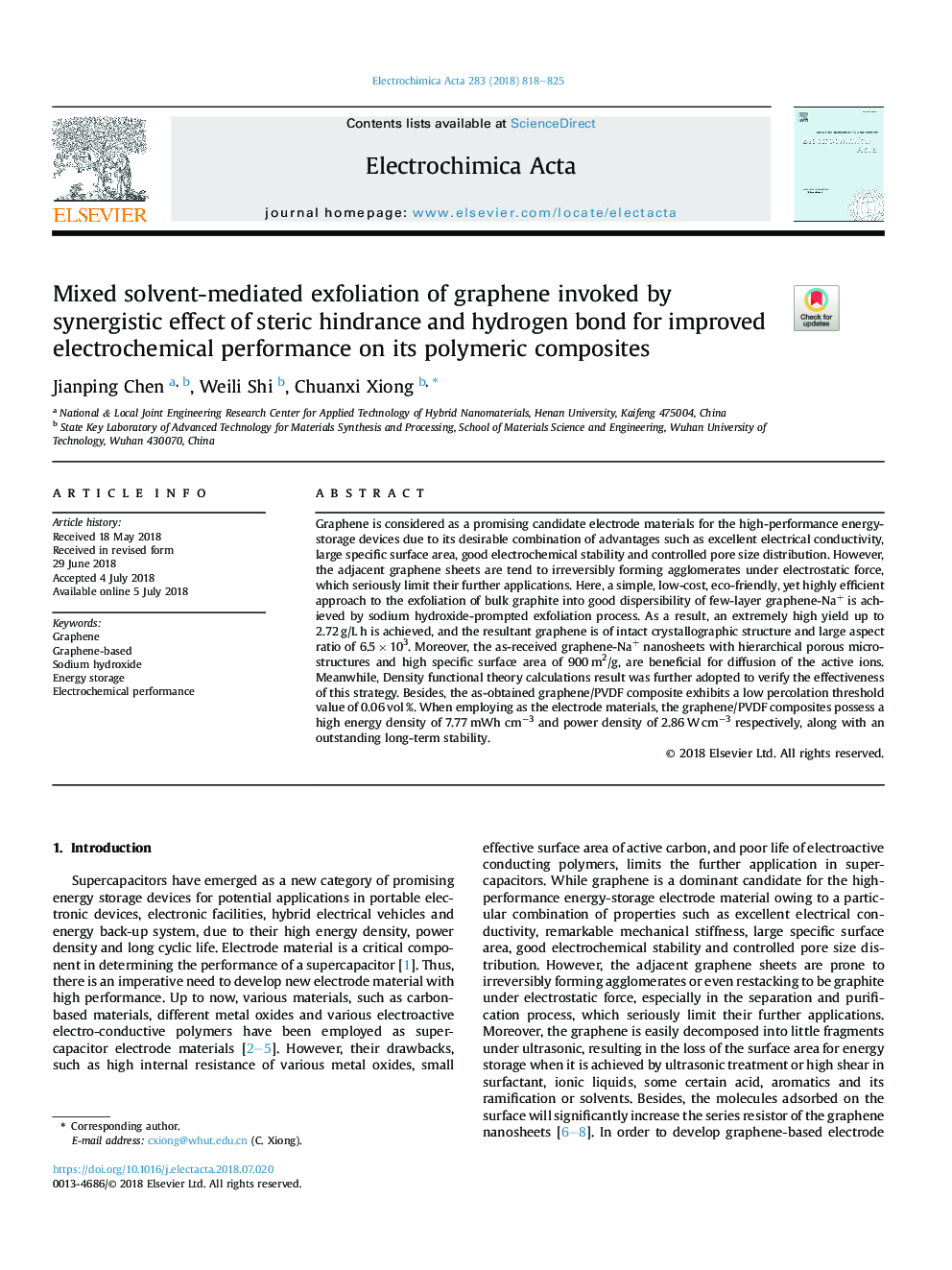| Article ID | Journal | Published Year | Pages | File Type |
|---|---|---|---|---|
| 6602069 | Electrochimica Acta | 2018 | 8 Pages |
Abstract
Graphene is considered as a promising candidate electrode materials for the high-performance energy-storage devices due to its desirable combination of advantages such as excellent electrical conductivity, large specific surface area, good electrochemical stability and controlled pore size distribution. However, the adjacent graphene sheets are tend to irreversibly forming agglomerates under electrostatic force, which seriously limit their further applications. Here, a simple, low-cost, eco-friendly, yet highly efficient approach to the exfoliation of bulk graphite into good dispersibility of few-layer graphene-Na+ is achieved by sodium hydroxide-prompted exfoliation process. As a result, an extremely high yield up to 2.72â¯g/Lâ¯h is achieved, and the resultant graphene is of intact crystallographic structure and large aspect ratio of 6.5â¯Ãâ¯103. Moreover, the as-received graphene-Na+ nanosheets with hierarchical porous microstructures and high specific surface area of 900â¯m2/g, are beneficial for diffusion of the active ions. Meanwhile, Density functional theory calculations result was further adopted to verify the effectiveness of this strategy. Besides, the as-obtained graphene/PVDF composite exhibits a low percolation threshold value of 0.06â¯vol %. When employing as the electrode materials, the graphene/PVDF composites possess a high energy density of 7.77â¯mWh cmâ3 and power density of 2.86â¯Wâ¯cmâ3 respectively, along with an outstanding long-term stability.
Related Topics
Physical Sciences and Engineering
Chemical Engineering
Chemical Engineering (General)
Authors
Jianping Chen, Weili Shi, Chuanxi Xiong,
